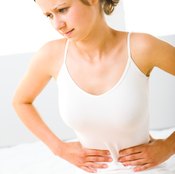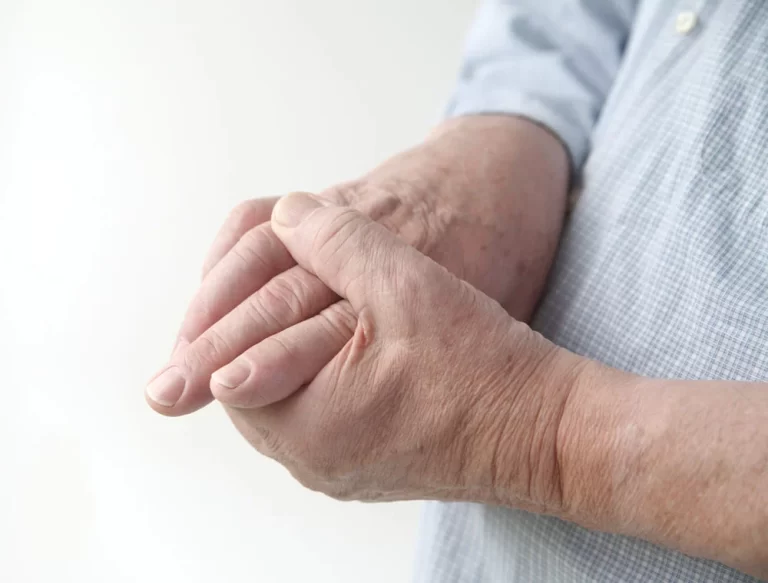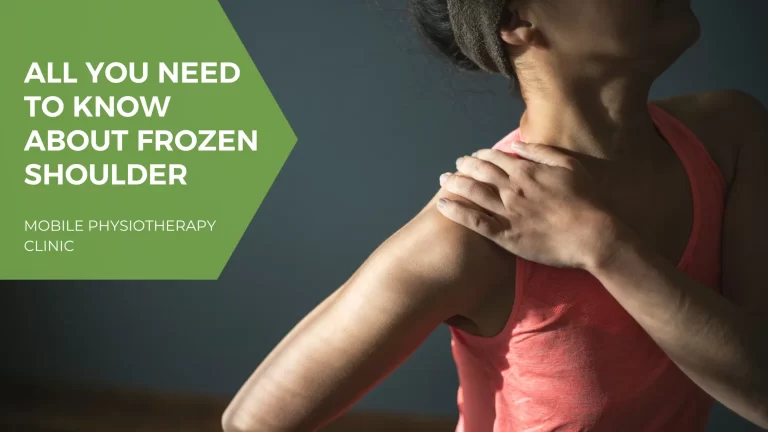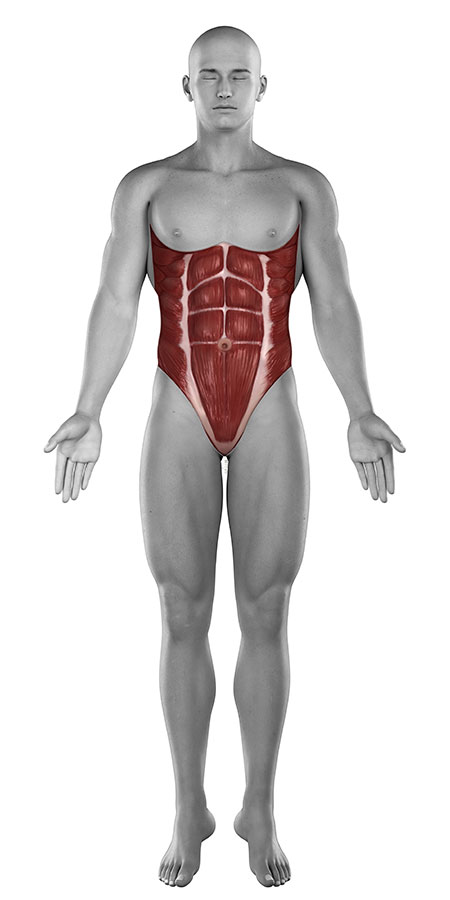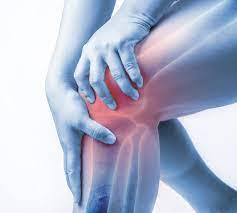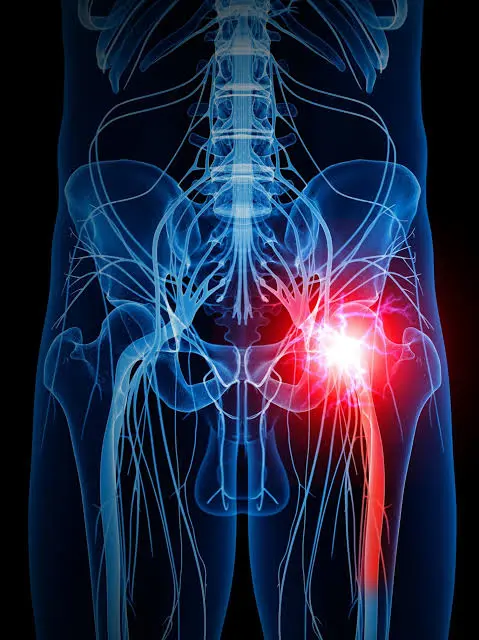Abdominal Muscle Pain
Table of Contents
What is an Abdominal muscle pain?
Abdominal muscle pain, also known as abdominal muscle strain or abdominal muscle soreness, refers to discomfort or tenderness in the muscles of the abdominal wall.
Abdominal muscle pain can also be caused by a tear or strain in an abdominal muscle or in the tendon that connects the muscle to the bone. It can happen for a variety of reasons, including gas, indigestion, abdominal muscle strains, etc.
The abdomen may feel sore and tender due to an abdominal muscle ache, especially when moving. People may experience the following symptoms in and around the abdomen if they have pulled a muscle: tenderness or soreness. Pain when the abdomen is touched. Sometimes it can heal itself with no medical intervention—just enough rest and attention—but other times, depending on how severe it is, it may need to be treated properly.
Anatomy of abdominal muscle
The muscles that make up the walls of the abdomen are known as the abdominal muscles. The abdomen is the area of the trunk that connects the thorax and pelvis. The viscera and abdominal cavity are enclosed by an abdominal wall, which is made up of muscle, fascia, and skin.
The abdominal muscles are distensible (able to adapt dynamically to changes in the volume of the abdominal contents) and support the trunk in addition to permitting mobility and holding the organs in place.
The intrinsic back muscles and deep abdominal muscles together comprise the core muscles, which support and stabilize the body as well as safeguard the spine.
Abdominal muscular strains can result from overstretching, excessive use, or a forceful, poorly executed trunk movement. It can also occur by using incorrect forms when participating in sports that include running, twisting, and jumping, carrying heavy objects, laughing.
Transverses abdominis
The transverses abdominis muscle is located in The deepest layer of the Abdomen.
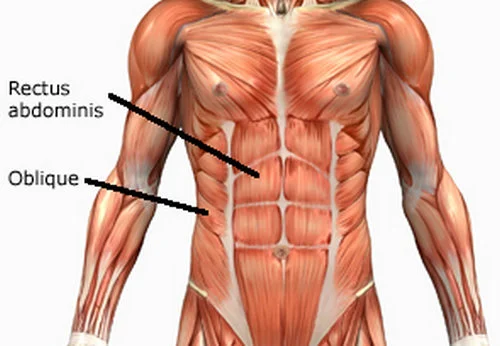
The rectus abdominis is located in front of the pelvis, between the pubis and the ribs. When this muscle contracts, it produces noticeable bumps or protuberances that are referred to as “the six-pack”. The main function of the rectus abdominis is to shift the body’s weight from the pelvis to the ribs.
External oblique muscles
The term external oblique muscles refers to the muscles on either side of the rectus abdominis. The external oblique muscles provide the trunk rotational movement, but only to the opposite side of the contracting muscle. To turn to the left, for instance, the body contracts the right external oblique.
Internal oblique muscles
The muscles known as the internal oblique are located to the side of the rectus abdominis, just inside the hip bones. They provide a different function than the external oblique muscles. The right external oblique and the left internal oblique, for instance, must contract concurrently in order to twist the trunk to the left.
Structure and function of abdominal muscle
The abdominal muscles can be roughly classified into two categories: the posterior walls and the anterior-ventral walls. Muscles of the Anterolateral Abdominal Wall include Two vertical muscles, divided by the linea alba, which are situated on the midline: The abdominis rectus and the pyramidalis
The transverses abdominis, internal abdominal oblique, and external abdominal oblique are the three flat muscles on the anterolateral side, organized from superficial to deep.
The Abdominal Muscles Muscle of the Posterior Wall Quadratus: QL is responsible for the lateral flexion and extension of the vertebral column, as well as for fixing the 12th rib and helping the diaphragm contract during inhalation.
Muscle include,
- Psoas Major
- Diaphragm
- Psoas minor
- Iliacus
- The posterior side of the diaphragm
Muscle action of abdominal muscle
The muscles have distinct orientations of muscular fibres and function in all three planes during motions. The abdominal muscles regulate how the ribs, pelvis, and spine move.
There’s a time in a typical gait when the rectus abdominis and external obliques on one side contract eccentrically to counteract the anterior pelvic tilt caused by the side’s extended hip.
Abdominal muscles are used in almost every motion, including swimming, golf club swinging, biking, jogging, and walking. Even when the body is at rest, the abdominals, along with other core muscles, help maintain stability and balance.
Since the abdominals are very thin structures, they don’t bulk up as much as other muscles do. People with “six-pack abs” appear that way mostly due to low belly fat, which brings out the fine details of their muscles. However, doing sit-ups won’t help you lose this fat. The greatest way to reduce body fat is to increase metabolism, which is largely dependent on food.
Function of breathing: In forced breathing, the inspiratory and expiratory muscles are actively used. The internal intercostal muscles and the abdominal muscles contract during forceful breathing. Breathing is actively assisted by the expiratory muscles when exercising. The abdominal muscles gradually relax during expiration and the rib cage muscles contract during inspiration.
Causes of Abdominal muscle pain
Numerous factors can lead to abdominal pain. The most frequent reasons, which include gas pains, indigestion, and pulled muscles, are typically not life-threatening. Urgent medical intervention may be required for other conditions. While the location and pattern of stomach discomfort might offer valuable information, the duration of the pain is particularly helpful in determining its etiology.
Acute stomach discomfort typically appears and subsides in a few hours to several days. Chronic abdominal pain may come and go. Pain of this kind could last for several weeks, months, or even years. Abdominal pain that flares up suddenly is typically an indication of other acute conditions that take hours or days to manifest.
The causes can be anything from mild ailments that resolve on their own to life-threatening medical situations, such as:
- Appendix pain
- Inflammation of the bile duct is called Cholangitis.
- Cholecystitis
- Bladder irritation, or cystitis
- Diabetic ketoacidosis: a condition where the body produces ketones or high blood acid levels
- Diverticulitis
- Inflammation of the upper portion of the small intestine is known as duodenitis.
- When a fertilized egg implants and grows outside of the uterus, like in a fallopian tube, the pregnancy is called an ectopic pregnancy.
- Inability to pass hardened stool is known as fecal impaction.
- Heart attack
- Intestinal blockage
- Kidney infection is known as pyelonephritis
- Kidney stones are hard deposits caused by chemicals in the urine.
- A pus-filled pocket in the liver is called a liver abscess.
- Gastrointestinal ischemia
- Decreased blood flow to the intestines, or mesenteric ischemia
- Swollen lymph nodes in the membrane fold holding the abdominal organs in place are indicative of mesenteric lymphadenitis.
- A blood clot in a vein that removes blood from your intestines is known as mesenteric thrombosis.
- Pancreatitis
- Pleurisy, or inflammation of the lung’s outer membrane
- An infection of one or both lungs is called pneumonia.
- A pulmonary infarction is a dyspnoea of the lungs’ blood supply.
- Spleen ruptured
- Fallopian tube inflammation is known as salpingitis.
- Multiple sclerosis
- Shingles are also known as herpes zoster.
- Infection of the spleen
- A splenic abscess is a pocket of pus within the spleen.
- Colon rupture
- Urinary tract infection(UTI)
- Gastric viral diarrhea (stomach flu)
Chronic (episodic or sporadic) Causes of Abdominal muscle pain
It’s frequently challenging to pinpoint the precise cause of persistent stomach discomfort. The severity of the symptoms might vary; they might come and go without necessarily getting worse over time. Chronic stomach pain can be caused by the following conditions:
- Angina (heart’s decreased blood flow)
- Gluten sensitivity
- Endometriosis
- Gall bladder stones
- Gastritis, or stomach lining inflammation
- GERD, or gastroesophageal reflux disease
- Hiatus hernia
- An inguinal hernia is a condition where tissue protrudes through a weak point in the abdominal muscles.
- Sensitive intestinal syndrome
- Ovulation pain
- Pelvis Inflammatory disease (PID)
- Stomach ulcer
- Sickle cells Anaemia
- Pulled or strained Abdominal muscle
- An instance of inflammatory bowel disease is ulcerative colitis.
- Stomach ulcer
Progressive disease Abdominal muscle pain
Generally speaking, abdominal pain that gets worse over time is serious. Other symptoms frequently arise as a result of this pain. Progressive stomach pain can be caused by the following:
- Cancer
- Crohn’s disease
- Spleen enlargement (splenomegaly)
- Gallbladder Cancer
- Hepatitis
- Renal cancer
- Lead Poisoning
- Hepatic cancer
- Pancreas cancer
- Stomach cancer
- An ovary and fallopian tube are involved in a pus-filled pocket known as a tubo-ovarian abscess.
- Uraemia is the accumulation of waste materials in the blood.
Epidemiology Abdominal muscle pain
Approximately 3% of adults visit their family doctor due to stomach pain. Between 2006 and 2011, the number of visits to the emergency department (ED) in the US for abdominal pain rose by 18%. Out of the twenty common conditions seen in the ED, this was the largest increase. Additionally, the rate of ED visits for nausea and vomiting rose by 18%.
Pathophysiology Abdominal muscle pain
Visceral or peritoneal pain are other terms for abdominal pain. The foregut, midgut, and hindgut are the three sections that make up the abdomen. The pharynx, lower respiratory tract, stomach, proximal duodenum, liver, biliary tract (which includes the bile ducts and gallbladder), and pancreas are all located in the foregut. Parts of the appendix, ascending colon, cecum, distal duodenum, and the first half of the transverse colon are located in the midgut. The distal portions of the rectum, sigmoid colon, descending colon, transverse colon, and superior anal canal are located in the hindgut.
There is a visceral afferent nerve associated with each subsection of the gut that travels with the autonomic sympathetic nerves to carry sensory data from the viscera to the spinal cord. The visceral sense The somatic afferent nerves, which are highly specific, overlap with the visceral afferent nerves, which carry non-specific information from the gut to the spinal cord. Because of this, visceral afferent information that travels to the spinal cord may manifest in the somatic afferent nerve’s distribution. For this reason, appendicitis first manifests as T10 per umbilical pain before developing into T12 pain when the abdominal wall peritoneum—which is densely packed with somatic afferent nerves—is affected.
Duration of Abdominal muscle pain
The duration of abdominal pain varies based on the underlying cause. It may be continuous or recurrent, appearing and disappearing at seemingly random times or about particular actions or behaviors.
The duration or recurrence of the abdominal pain does not always indicate the severity of the underlying ailment.
When severe pain suddenly flares up, you should get medical help right away. If your pain worsens with movement or coughing, or if it starts mild and gets worse over hours or days, you should see a doctor.
Different types of upper Abdominal pain
After determining the exact location of the pain in your upper abdomen, your healthcare provider will make an effort to pinpoint it. They might inquire as to whether your pain is in your:
Upper left: Your sternum divides your upper left quadrant from your upper right quadrant. This is the home of your stomach. Your spleen is on the far left, and your pancreas is behind it.
Upper right: Most of your biliary system is located in your upper right quadrant. This includes the majority of your liver and bile ducts, half of your pancreas, and your gallbladder, which is located on the far right.
Upper middle: In the center of your upper abdomen, your pancreas, liver, and stomach meet. Physicians refer to this area as the epigastric region. Pain in the stomach may be related
- Moderate, severe, or mild.
- Sharp or dull?
- Either widespread or specific.
- Burning.
- Tense or achy.
- Consistent, advancing, (occurring in phases).
- Additionally, you ought to let them know if you experience recurrent bouts of the same discomfort during particular occasions or situations. You might sense it more, for instance:
- Following a meal.
- Following a supine position.
- As you stoop.
- When an object is lifted.
When to see doctors?
The severity of stomach pain is not always obvious from the way it makes you feel. While some transient conditions can be excruciatingly painful or uncomfortable while they’re present, some serious conditions only have mild symptoms.
It is always a good idea to discuss persistent or recurrent pain with a healthcare provider. Seek medical attention if your pain is becoming worse or is severe, or if it is accompanied by warning signs like:
- Vomiting or pooping blood?
- Elevated temperature.
- light-headedness or disorientation.
- Exercise makes the pain worse.
- Abdominal swelling that is visible.
Diagnosis of Abdominal muscle pain
- Abdominal wall pain can be assessed with ultrasonography, particularly point-of-care ultrasonography. Masses, abscesses, hematomas, tissue edoema, and slipping rib syndrome can all be found with it. Additionally, it can offer dynamic evaluation for hernias and guidance for trigger point injections, either diagnostically or therapeutically. Generally speaking, additional sophisticated imaging modalities like magnetic resonance imaging and computed tomography are not required unless there is uncertainty regarding the diagnosis or the etiology of the abdomen.
- Confirming the diagnosis of nerve entrapment can be aided by diagnostic trigger point injection, either with or without ultrasound guidance In patients with suspected anterior cutaneous nerve entrapment syndrome, ultrasound guidance is preferred as it helps the needle infiltrate the entire neurovascular channel and provides needle visualization to prevent accidental entry into the abdominal cavity. In the initiator trigger point injection: At the site of maximum tenderness, 5 to 10 mL of 1% to 2% lidocaine are injected deeply into the fascia and muscle. A 50% or greater improvement in pain indicates that abdominal wall pain is the diagnosis. About 20% to 30% of patients with anterior cutaneous nerve entrapment syndrome also experience pain resolution.
- Take to the patient about any family history of illness, with an emphasis on ailments that could be similar to the way the patient is currently presenting.
- Talking with the patient about any health-related behaviors (such as drug and alcohol abuse, tobacco use, and sexual activity) that could increase the likelihood of a particular diagnosis.
- Distinguishing between pain coming from the abdominal wall’s muscles and pain coming from the viscera using Carnett’s sign.
- Following a comprehensive history, a physical examination is necessary to detect any relevant physical signs that could help determine the diagnosis. This includes a full abdominal, lung, and cardiovascular examination as well as a genitourinary exam for female patients.
- The following tests can help with diagnosis as well
- Complete blood count, basic metabolic panel, electrolytes, liver function tests, amylase, lipase, troponin I, and, in the case of females, a serum pregnancy test are among the blood tests available.
- Analyzing urine
- Trigger point injection: At the site of greatest tenderness, 5 to 10 mL of 1% to 2% lidocaine are injected deeply into the fascia and muscle (see video below). A 50% or greater improvement in pain indicates that abdominal wall pain is the diagnosis. About 20% to 30% of patients with anterior cutaneous nerve entrapment syndrome also experience pain resolution.
Treatment of Abdominal muscle pain
Your healthcare provider will conduct a physical examination and inquire about your medical history. To identify the precise cause of your upper abdominal pain, they might also perform tests. These could include blood tests that look for inflammation and infections, as well as imaging tests of your tissues and organs. They will present you with a plan of care based on their diagnosis.
The cause of abdominal wall pain determines how to treat it. Patients’ anxiety may be reduced with patient education and reassurance, which in turn may lessen the frequency of clinic visits and patients’ insistence on needless, costly, or invasive evaluations.
Medications for abdominal wall pain that are most frequently prescribed are muscle relaxants, antispasmodics, and oral analgesics. However their use is not supported by evidence, and their efficacy varies. This also applies to topical analgesics, massage, and other local therapies.
As was previously mentioned, abdominal wall pain due to nerve entrapment can be diagnosed and treated with ultrasound-guided trigger point injection. Given that local anesthetic injections have a relatively high failure rate, a combination of local anesthetic and other medications, such as corticosteroids, on botulinum toxin A (Botox),
Transverses abdominis plane block, rectus sheath plane block, chemical neurons with phenol, and radiofrequency denervation are alternatives to local injection; however, there is a lack of information regarding the safety and efficacy of these techniques. For cases of anterior cutaneous nerve entrapment syndrome that need more than two injections, surgical neurectomy—in which a portion of the entrapped nerve is surgically removed—may be an option. It is advised to use a stepwise management strategy, starting with a local trigger point injection and moving on to a neurectomy.
Cold therapy in Abdominal muscle pain
As soon as possible, cold therapy should be used to reduce swelling, pain, and bleeding. Inflammation may be lessened with cold therapy.
To carry out this:
- Obtain a bag of frozen vegetables, an ice pack, or a gel pack so you can apply ice to the injured area.
- The cold pack should be surrounded by a cloth or towel. This will lessen the chance of further irritation while also protecting the skin.
- For ten to fifteen minutes at a time, gently apply the cold pack to the injury.
- Throughout the initial few days following the injury, try to repeat this procedure every hour.
Heat therapy Abdominal muscle pain
Applying heat therapy helps ease tension and relax muscles, which lessens pain. Additionally, heat promotes blood flow to the injured area. This may lessen inflammation and encourage healing.
To carry out this:
- Obtain a heating patch or pad.
- If you don’t have a premade compress, you can stuff rice into a fresh sock and fasten it. Give the sock a minute or two in the microwave. Verify that it is not excessively hot to the touch.
- For a maximum of 20 minutes at a time, apply a warm compress to the afflicted area.
- For the first several days after the injury, if at all possible, repeat this procedure every hour.
Compression Abdominal muscle pain
To aid in compressing the abdomen, you might want to wear an abdominal binder or bandage. The movement and swelling may be reduced with the application of pressure.
To find out how long and how tight to wear the binder to relieve your symptoms, consult your doctor. Select a binder composed of hypoallergenic materials to prevent allergic reactions as well.
Rest
Get as much rest as you can and steer clear of any stressful or taxing activities. If you have an athletic injury, this is very crucial.
Look for a cozy spot to sit or lie down, and make use of this time to engage in some soothing activities. As soon as your pain completely goes away, take it easy. This might need several weeks to complete.
Exercises of Abdominal muscle pain
Stretching of abdominal muscle
Stretching in Cobra Pose
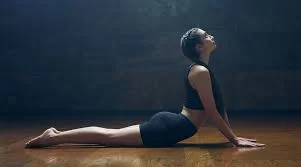
- How to do it: Place your face down on a yoga mat or the ground. This is where it all starts.
- Bend both hands so that they are close to the shoulder.
- Gaze straight ahead and push your torso upward while keeping your hips flat on the floor.
- The muscles in your abdomen will be stretched.
- After 20 seconds of holding this cobra pose, return to the starting position.
- Repeat steps two and three times.
- Repeat for 20 to 30 seconds on the right side.
Cat cow pose
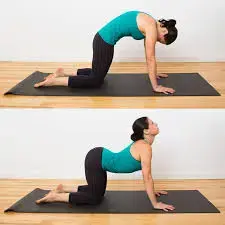
- How to do it: Place all four limbs in the proper positions. Then, arch your back like a cat does by bringing your head down.
- Raise your neck to its maximum potential and lower your belly to its maximum potential to extend your abdominal muscles.
- After 20 seconds, hold this abs stretch and return to the beginning. You can progress this exercise with the help of a practitioner.
Side straddle stretch while seated
- How to do it: Take a straight seat on the ground, legs apart.
- With the fingers pointing upward and the elbows bent, raise your arms to the side.
- With your left elbow pointing towards the floor, slowly bend sideways to the left using your abdominal muscles.
- Avoid rotating or bending forward. The obliques are stretched, as you can feel.
- After 20 to 30 seconds of holding this abs stretch, return to the starting posture.
- Repeat for 20 to 30 seconds on the right side.
Opening of the chest on the ball
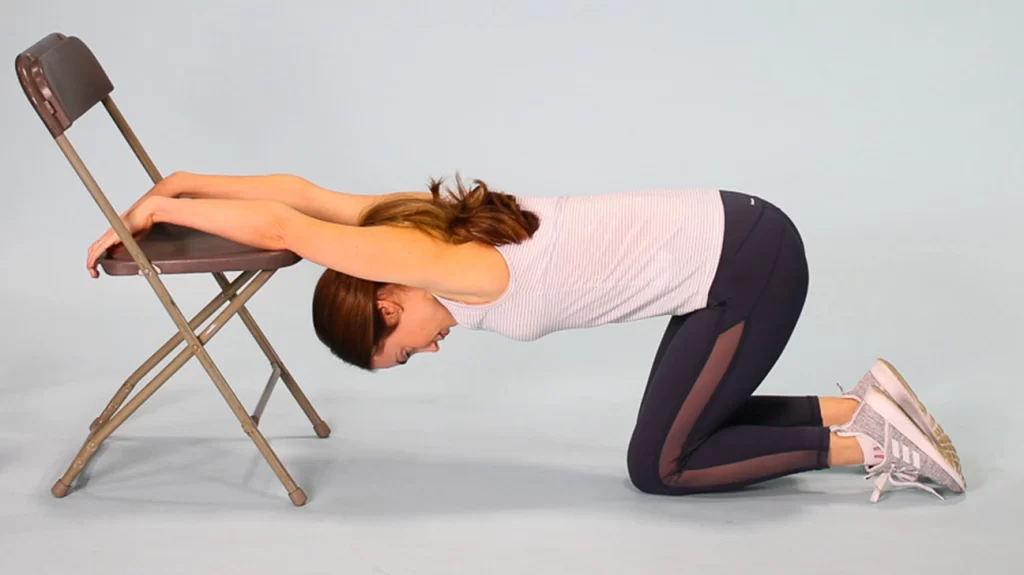
- Steps to follow: Lie down on the exercise ball.
- The feet should be extended, the back extended, and the scapulae, neck, and head on top of the ball.
- Open your arms wide and let them fall to the side of the ball to begin the stretch.
- Be sure to raise your gaze to the roof.
- Three to four times, repeat.
- Repeat for 20 to 30 seconds on the right side.
Side Ab Stretch
- With your arms on either side and your feet shoulder-width apart, take a tall stance.
- Keeping the right arm at your side, raise the left arm into the air.
- Sliding the right arm down the side, slowly lean to the right.
- You should feel your obliques stretching in this pose.
- Return to the starting position slowly and place both hands on either side.
- Stretch your abs again, raising your right arm this time.
- Repeat for 20 to 30 seconds on the left side.
Supine Stretch Technique
- On a mat, assume a laying position.
- Next, raise your arms and extend your hand over your head, pointing your fingers away from your body.
- Stretch away from the head and along the spine.
- For eight to ten seconds, hold this supine stretch.
- Repeat for15 to 30 seconds on the other side.
How to Use a Slow Cyclone for Abs
- This dynamic ab stretch works your abs. Then, maintain a slight bend in your knees to keep them soft while standing tall with your feet shoulder-width apart.
- Raise both arms into the air while standing straight.
- To make the trunk move in a circular motion, circle the torso from the hips upward.
- Keep your arms parallel to your body and move through the stretch continuously as you do this.
- Stretch for 30 seconds.
- Repeat for 20 to 30 seconds on the right side.
Lotus Pose
- Technique: Start by lying prone and placing your arms by your sides, against the sides of your legs.
- Raise your legs and chest to form a boat shape, which will cause your back to curve inward.
- Release and descend back to the earth.
- For ten seconds, maintain this boat pose.
Bending Crunch Lifting
- How to Perform: Place your hands palms together in the prayer pose and stand with your shoulders shoulder-width apart.
- Raise your arms above your head to mimic the upper limbs of the tree pose.
- Tilt your body to the right until your obliques start to stretch.
- Next, shift the torso to the left while simultaneously kicking the lift leg out to the side.
- For 20 to 30 seconds, repeat on one side; then, switch to the other side and repeat.
- This abs stretch should be held for 30 seconds on each side, with a break in between.
Kneel Spinal Wave
- Start with your hands and knees. acquire equilibrium and settle into a mat.
- To make the head lower and the arms flat in front of you, push back.
- You should be sitting on your knees with your back straight in this pose.
- Push yourself up into the “cat” position from here and then back into the “cow” position.
- Next, extend your legs into a cobra pose, keeping your feet soles up, and your torso and chest upright.
- Return to the “cat” position and repeat the movement. You must take care some precautions while doing this kind of exercise.
- How long this stretch lasts is 20 seconds.
Seated Rotation
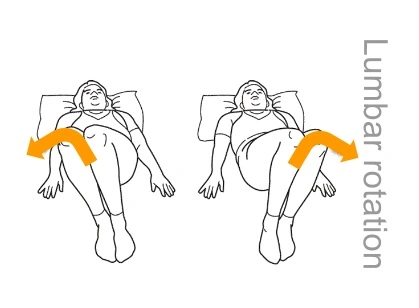
- Methodology Sit comfortably in a chair with a neutral spine.
- Pause the pose and turn your body to the right.
- Next, switch to the left and stop.
- Continue rotating for 20 to 30 seconds.
Bending position
- How to do it: Lay down on your stomach, bend your knees to form a 90-degree angle, and start the stretch.
- Maintaining the pelvis and thighs on the ground, raise the chest and stomach off the floor.
- Pull the legs up and push the chest out while extending the arms backward and grabbing the ankles.
- Throughout the entire stretch, keep your neck and spine stable by keeping your gaze fixed on the wall in front of you.
- After 30 seconds of holding this abs stretch, slowly lower your body.
Twisting Shoulder Bridge Curl up on a floor.
- Bring the heels in towards the hips while bending both knees. The arms at each side.
- Now, raise your hips towards the sky while keeping your feet on the ground.
- Reach for the left heel while keeping the left arm on the ground. You must take care some precautions while doing this kind of exercise.
- Next, extend your right arm back and over your head while rolling over onto your left shoulder.
Common mistakes avoided during a stretch
Stretching the muscle should be stopped as soon as you experience any pain, even though you may only feel the stretch at that point.
Overarching the back
Overarching the back increases the strain on the hamstrings, thighs, and trunk muscles.
Excessive knee bending
Excessive knee bend can put additional strain on the legs, especially the knees, which can lead to pain and discomfort. Being in the incorrect posture can also make the stretch less effective by increasing its difficulty and reducing the amount of time you can perform it.
Leaning too far laterally
By placing additional strain on the obliques during an abs stretch, leaning too far increases the risk of injury.
Overly sluggish
This particular abdominal stretch must be performed at a moderate tempo. Crunching should be done slowly and deliberately to avoid straining the obliques by going too quickly.
Placing the head on the ball
Avoid overextending your back and resting your lower back on the ground as this can lead to strain and pain in your back. As an alternative, make sure your lower back and shoulders are elevated onto the ball for the best possible support.
Pushing with your toes
Pushing with your toes can be risky and put stress on your back and legs.
Traveling too fast
Stretching is a slow-motion exercise, and hurrying will prevent you from reaping the full benefits of ab workout stretches. Thus, take your time and don’t rush through this exercise.
Make sure you feel the muscles stretching as you move slowly.
Knee bending
To perform a standing abs stretch, you must stand up straight with your knees bent. Knee bending puts the knees at risk of strain and ultimately puts undue strain on the legs and knees.
What typical errors should one avoid when performing an abs stretch?
When performing the abs stretch, you should avoid making the following mistakes:
Excessive stretching: Excessive stretching during this abdominal stretch may increase the chance of straining a muscle, most likely the obliques. You must sufficiently extend the muscle.
Strengthening of abdominal muscle
Abdominal Crunches Technique
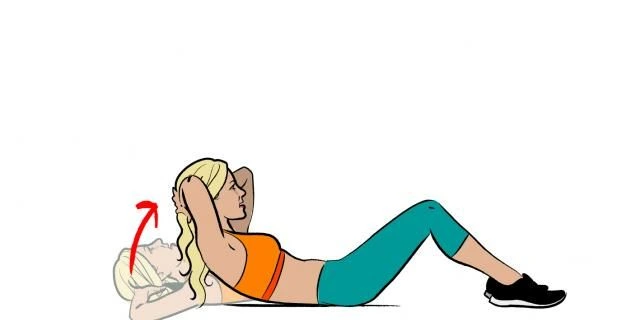
- This is an excellent exercise that won’t overstress the spine and lower back.
- You must flex your knees to a comfortable position while lying on your back. You can also cross your arms in front of your chest or lock your hands behind your head. Finally, curl your head, shoulders, and upper back off the ground.
- You should just rise two to three inches and release your breath as you do so, keeping your lower back in contact with the earth.
- Assume this posture and hold it for 3-5 seconds.
- Return to the starting position slowly. Ten more times, repeat. You must take care some precautions while doing this kind of exercise.
Slow ab leg raise
- You must flex your knees to a comfortable position while lying on your back to perform this exercise.
- Next, spread your legs. To raise the feet off the ground in an arc-like motion, contract the abdominal muscles.
- Raise the feet by a good ten inches. Restore the legs and feet to the ground slowly, maintaining the same arc-like movement.
- Ten more times, for two to three sets.
Twisting Sit-Ups
- This is an excellent exercise to activate and strengthen the obliques. You must lie on your back to perform this exercise. knees flexed to a comfortable angle. Shut your hands behind your head. You must take care some precautions while doing this kind of exercise.
- Exhale as you lift, curling your head, shoulders, upper and lower back off the floor and angling your left elbow towards your right knee.
- Maintain this role for 16 seconds. Return to the starting position slowly.
- Raise your head, shoulders, upper and lower back off the floor, and bend your left elbow to your right knee. Keep this posture for five seconds.
- Exhale once more as you raise yourself slowly back to the beginning position.
- Repeat alternating the twisting motion ten more times. The best way to stay in shape is to keep your abdominals functioning properly. You can also prevent episodes of sciatica or back pain by exercising frequently and adopting good posture. You can progress this exercise with the help of a practitioner.
Pilates
How do you do that?
- While lying on your back, raise your shoulders off the ground and place your hands next to your hips. Raise and sustain the feet.
- Verify that the back touches the ground. Should the rear legs be raised higher in bows to create a more rounded back? Maintain a straight stance. For 10–20 seconds, hold. You must take care some precautions while doing this kind of exercise.
Bicycle crunch
How would one go about doing that?
- One of the best exercises for strengthening the rectus abdominal muscle is this floor exercise.
- You must lie on the ground in a supine position for this exercise. Maintaining the feet flat on the ground, flex the knees and press the lower back into the earth. Place your hands behind your head, entwining your fingers if you’d like.
- Spread your elbows and gently hold your head in your hands. As you raise your shoulder blades off the floor, raise your knees so that your shins are parallel to the floor. (Take care not to pull or strain your neck.) As you extend your right leg at a 45-degree angle, Bring the right elbow in the direction of the left knee by rotating the upper limb to the left. Return to the beginning stance, keeping your elbows wide and your knees bent.
- Repeat on the other side, bringing the left elbow towards the left knee as you extend the left leg to a 45-degree angle and rotate your upper body to the right.
- Perform two to three sets of fifteen to twenty repetitions, pausing between thirty and sixty seconds between sets. You must take care some precautions while doing this kind of exercise.
Single leg jack-knife
Stretch your arms above your head while lying on your back. Next, raise one leg and simultaneously extend your hands towards your foot. As you slowly lower your body, make sure your arms and legs remain straight and your upper body is fully raised off the ground.
Plank position hold
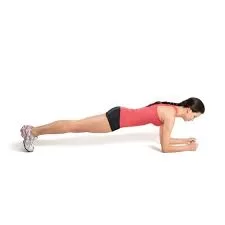
- Start from your toes, extend your hands or elbows, and maintain a board-like posture. Your hands or elbows should be shoulder-width apart and your feet hip-width apart.
- Take up this role. Make sure your hips are not rising or falling too much.
- For 20–30 seconds, hold.
- You can progress this exercise with the help of a practitioner.
Fitness ball rollout
This exercise introduces the patient as the following steps,
- For this exercise, use an exercise ball. The abdominal rectus muscle is the focus of this exercise.
- You must kneel on the ground with a stability ball in front of you to complete the exercise; alternatively, you can kneel on a yoga mat for additional cushioning. The ball ought to be reachable with one arm.
- Place the hands on the ball with them in a loose fist. Additionally, the forearms will rest on the ball. Verify that the elbows are extended to a 90-degree arc. Maintain a straight back and a body in a straight line. With the arms and body straightened out, roll the ball forward with your hands. This motion must be deliberate and slow. Keep your eyes focused directly ahead. Stretch as far as you can. It will make contact with the ball. For 2 to 3 sec, maintain this stance.
- Bend your elbows to roll the ball back to the starting position as you slowly reverse the motion. So that your hips don’t drop, maintain a tight core.
Flutter kicks in the supine position
- Lay flat on your back with your arms straight beside your body. Raise both legs straight and move them in the opposite direction, both up and down.
- If a space exists between the floor Raise your upper body to round out your back and the floor. After that, you can place them next to your body and lean on your elbows to support your weight. You can progress this exercise with the help of a practitioner.
- 20 reps/20 seconds, 10 on each side.
Sit-ups position holding
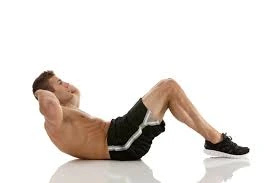
- Perform sit-ups correctly to ensure their safety. You can either cross your hands in front of you or move them down your thighs to your knees instead of putting them behind your head. knees bent to a 45-degree angle. You must perform this exercise while lying on your back with your feet anchored and your knees bent. To make the back of the neck appear longer, tuck the chin in towards the chest. Cross the arms with the hands-on opposing shoulders, interlace the fingers at the base of the skull,
- Lay the palms down by your sides. Exhale as you raise the upper limb in the direction of the thighs. Inhale as you gently return to the ground on your own. You must take care some precautions while doing this kind of exercise.
Wall Squats
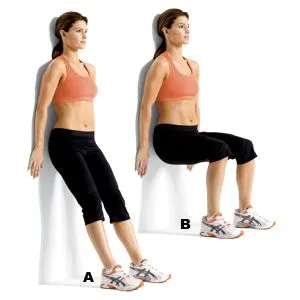
- There are many different ways to squat. To give the body new challenges, incorporate them into the routines.
- You must stand with your feet shoulder-width apart and your toes facing forward for this exercise.
- As you flex your knees and ankles and press your knees slightly open, bring your hips back.
- Bend your knees now until your thighs are parallel to the floor. You can progress this exercise with the help of a practitioner.
- To get back to the original upright position, straighten your legs and apply pressure to your heels. You must take care some precautions while doing this kind of exercise.
Surgical treatment of Abdominal muscle pain
When conservative treatment fails, surgery may be required for hernias, endometriosis, slipping rib syndrome, abdominal wall masses or abscesses, rectal sheath hematomas, xiphodyniasis, or sports hernias.
Prevention of Abdominal muscle pain
- Avert jerky, abrupt trunk movements.
- When lifting large, heavy objects, use caution. For instance, ask for assistance or lift using your legs.
- When lifting weights, playing sports, and engaging in other exercises, practice proper form.
- Do not overwork yourself.
- Consume a diet rich in fruits, vegetables, and water to maintain good health. This can lessen the chance of constipation and promote regular bowel movements, both of which can help avoid a hernia.
- Regularly engage in a range of ab-strengthening exercises.
- When in pain or discomfort, take a nap.
- Stretch daily, both before and following physical activity.
- Clench your stomach muscles when you sneeze or cough.
- Stretch thoroughly after the workout, build up your intensity gradually, and warm up before beginning.
- Pain in the abdominal muscles gradually goes away
Summary
Everyone has occasionally experienced stomach pain. Other names for abdominal pain include bellyache, tummy ache, gut ache, and stomach ache.
You can have mild or severe abdominal pain. It could be continuous or sporadic. Another name for abdominal pain is acute, and it can be transient. It can also be chronic—that is, occurs over weeks, months, or years.
FAQs
the protection, rest, icing, compression, and elevation principle is an easy and early pain-giving principle for relieving pain
Visceral, parietal, and referred pain are the three primary categories of abdominal pain.
Pain directly above the genitalia is a symptom of rectus abdominis tendinopathy.
Tension, stress, overuse, and minor injuries are the most frequent causes of muscle pain.
Your stomach’s surface could feel sensitive and swollen.
References
- Abdominal muscles. (n.d.-b). Physiopedia. https://www.physio-pedia.com/Abdominal_Muscles
- Abdominal pain. (2023, July 15). Mayo Clinic. https://www.mayoclinic.org/symptoms/abdominal-pain/basics/causes/sym-20050728
- Professional, C. C. M. (n.d.-p). Upper abdominal pain. Cleveland Clinic. https://my.clevelandclinic.org/health/symptoms/24736-upper-abdominal-pain
- Shian, B., & Larson, S. T. (2018, October 1). Abdominal wall pain: clinical evaluation, differential diagnosis, and treatment. AAFP. https://www.aafp.org/pubs/afp/issues/2018/1001/p429.html#treatment
- Wikipedia contributors. (2023c, November 29). Abdominal pain. Wikipedia. https://en.m.wikipedia.org/wiki/Abdominal_pain
- Department of Health & Human Services. (n.d.). Abdominal pain in adults. Better Health Channel. https://www.betterhealth.vic.gov.au/health/conditionsandtreatments/abdominal-pain-in-adults
- Abdominal pain. (2023b, July 15). Mayo Clinic. https://www.mayoclinic.org/symptoms/abdominal-pain/basics/definition/sym-20050728
- Leonard, J. (2023b, November 1). Why do I have spasms in my abdomen (“stomach” spasms)? https://www.medicalnewstoday.com/articles/321096
- Jyoti. (2022, June 28). Abdominal muscle pain causes symptoms, Treatment, Exercise. Samarpan Physiotherapy Clinic. https://samarpanphysioclinic.com/abdominal-muscle-pain/
- Relieve abdominal pain after exercise. (n.d.). Vinmec. https://www.vinmec.com/en/news/health-news/healthy-lifestyle/relieve-abdominal-pain-after-exercise/
- Sankhla, D. (2023, April 20). Abdominal pain – Type, cause, symptoms, treatment – Samarpan. Samarpan Physiotherapy Clinic. https://samarpanphysioclinic.com/abdominal-pain/#Lower_Abdominal_Pain

